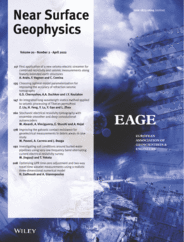-
oa Investigating soil conditions around buried water pipelines using very‐low‐frequency band alternating current electrical resistivity survey
- Source: Near Surface Geophysics, Volume 20, Issue 2, Mar 2022, p. 192 - 207
-
- 26 Apr 2021
- 28 Nov 2021
- 10 Jan 2022
Abstract
Underground pipeline infrastructures, such as water supply and industrial water pipes, were rapidly constructed in Japan during the 1970–1980s economic boom and have been ageing quickly. In general, corrosion of buried metal water pipes depends on the physicochemical properties of the soil around them. Conventionally, when conducting such investigations, the soil is excavated and sampled to analyse these properties in laboratories. As this damages the paved road surface, an alternative method is required. Resistivity is a significant physical property measured when investigating the corrosion risk of underground pipelines. Therefore, if geophysical exploration can facilitate the investigation of soil resistivity from the ground surface, it will play a key role in the renewal planning of water pipes. Traditionally, geophysical methods such as electrical and electromagnetic exploration have been used for measuring subsurface resistivity. Electrical exploration is a robust and noise‐tolerant method; however, it requires electrode installation. Most roads over the pipelines are paved, making conventional electrical exploration using metal electrodes a challenging task. Therefore, the Geological Survey of Japan, the National Institute of Advanced Industrial Science and Technology, has developed a very‐low‐frequency band alternating current electrical surveying technique that uses water‐saturated polyvinyl alcohol sponge electrodes. In this technique, electrodes are placed on an asphalt or concrete paved surface and the electrode measures the soil resistivity profile and detects the corrosive soil distribution without damaging the paved surface. Moreover, we improved this equipment to enable vertical electrical survey of numerous points and acquired data for 740 m of the survey line in 1 day at Maborikaigan coast in Yokosuka City. We found that the resistivity values varied with the depths and locations of the buried water pipes. These variations indicated that surveys and evaluations on long survey lines along water pipe burial routes are essential for risk management in water pipelines.




